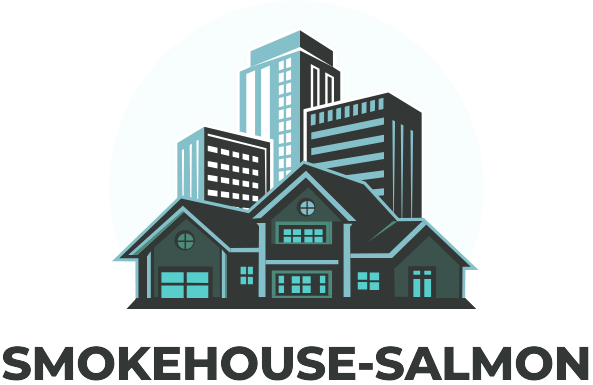In the fast-paced world of real estate, standing out is crucial. Cold emails can be your secret weapon, but let’s face it—nobody wants to read another boring sales pitch. Enter the realm of realtor cold email templates, where creativity meets professionalism. With the right approach, these emails can turn a cold lead into a warm client faster than you can say “open house.”
Imagine crafting an email so engaging that it practically jumps off the screen and into your prospect’s heart. It’s not just about selling a property; it’s about building relationships and making connections. With a sprinkle of humor and a dash of charm, these templates can help realtors break the ice and open doors—literally. So grab a cup of coffee, and let’s dive into the art of writing cold emails that not only get noticed but also get results.
Table of Contents
ToggleUnderstanding Realtor Cold Email Templates
Cold emailing offers a strategic approach for realtors to connect with potential clients. Crafting the right template holds significant value in establishing initial contact and nurturing future relationships.
Importance of Cold Emailing in Real Estate
Cold emailing serves as a powerful tool in real estate marketing. It allows realtors to reach out to potential clients who may not respond to traditional methods. Engaging emails can capture attention and encourage open dialogue. Analytics show that well-targeted emails lead to higher response rates than phone calls or social media outreach. Conversion rates often improve when cold emails highlight specific property details or market insights. Realtors gain an edge when they utilize cold emailing to remain competitive.
Key Components of Effective Templates
Several components enhance the effectiveness of cold email templates. Personalization increases engagement; using the recipient’s name establishes a connection. A clear subject line encourages recipients to open the email. The opening paragraph should grab attention and prompt curiosity. Including a concise call-to-action guides recipients towards the next step. Incorporating relevant property details or market trends adds value to the email. Lastly, closing with a friendly and professional sign-off reinforces a positive impression.
Types of Realtor Cold Email Templates
Realtors can utilize various cold email templates to effectively connect with prospects. Each type serves distinct purposes in building relationships and securing leads.
Introduction Emails
Introduction emails aim to establish initial contact with potential clients. These emails should include a personalized greeting and a brief introduction of the realtor. Highlighting unique value propositions can capture attention. Mentioning local market expertise or recent sales successes adds credibility. Including a friendly closing statement encourages dialogue.
Follow-Up Emails
Follow-up emails serve as reminders for previous outreach attempts. A concise summary of the previous interaction renews interest. Realtors can inquire if the recipient has questions or needs further information. Adding relevant property listings showcases options tailored to their interests. Ending with a clear call-to-action helps prompt a response.
Market Update Emails
Market update emails provide prospects with valuable insights into local real estate trends. Sharing important statistics, such as average home prices or inventory levels, reinforces the realtor’s expertise. These emails should focus on recent developments in the market that might interest potential buyers or sellers. Offering insights helps establish the realtor as a trusted resource. Including an engaging subject line can improve open rates.
Best Practices for Crafting Templates
Effective cold emails capture attention and maintain engagement. Employing specific strategies elevates the quality of outreach, increasing the likelihood of a response.
Personalization Techniques
Utilizing personalization significantly enhances connection. Addressing recipients by name establishes familiarity. Including details about their neighborhood or recent real estate trends demonstrates genuine interest. Mentioning mutual connections adds credibility and strengthens relationships. Tailoring the message based on client preferences fosters trust and encourages interaction. Personalized emails yield a higher response rate than generic ones, often leading to fruitful conversations.
Compelling Subject Lines
Crafting compelling subject lines grabs attention immediately. Short, enticing phrases inspire curiosity, prompting recipients to open the email. Incorporating actionable language, such as “Discover Your Dream Home,” motivates engagement. Questions within the subject line can provoke thought, leading to increased open rates. Providing a hint of value, such as market insights or exclusive listings, piques interest and encourages prospects to explore further. Effective subject lines distinguish realtors in crowded inboxes.
Clear Call to Action
Incorporating a clear call to action creates direction within the email. Effective calls to action guide recipients toward the desired response, whether scheduling a call or requesting more information. Phrasing should be straightforward and persuasive, such as “Let’s discuss your home goals next week.” Highlighting the value of taking action clarifies benefits for the recipient. Strategic placement within the email ensures visibility, increasing the chances for conversion. Clear calls to action result in engaged leads and productive follow-ups.
Analyzing Real-World Examples
Successful cold email templates effectively capture attention and foster relationships. Great examples showcase personalization and relevance, demonstrating their power in real estate outreach.
Successful Realtor Cold Email Templates
Personalized openings engage recipients from the start. Realtors often mention a recent neighborhood event or local market trend to establish context. Attention-grabbing subject lines also play a vital role; incorporating specifics about a property can spark curiosity. A concise and clear call to action encourages responses, such as scheduling a property tour or requesting more information. Successful templates highlight unique selling points, like a recent price drop or exclusive listing access, ultimately motivating prospective clients to engage.
Common Mistakes to Avoid
Generic greetings can undermine the impact of a cold email. Realtors often lose potential leads by failing to personalize their messages, neglecting to include the recipient’s name or specific details related to their interests. Lengthy emails may overwhelm readers; brief messages convey essential details without losing their interest. Overly sales-driven language can feel pushy, pushing prospects away. Lastly, ineffective or vague subject lines decrease open rates; investing time in crafting compelling subjects increases visibility and engagement.
Mastering the art of cold emailing can be a game changer for realtors looking to thrive in a competitive market. By crafting engaging and personalized messages, they can turn cold leads into valuable connections. The right templates not only enhance communication but also showcase a realtor’s expertise and understanding of the local market.
Utilizing humor and relevant insights can make a significant difference in capturing attention and fostering relationships. With the right strategies and a focus on personalization, realtors can achieve higher engagement rates and ultimately drive more successful interactions with potential clients. Embracing these techniques ensures that their outreach efforts are not just effective but also memorable.




